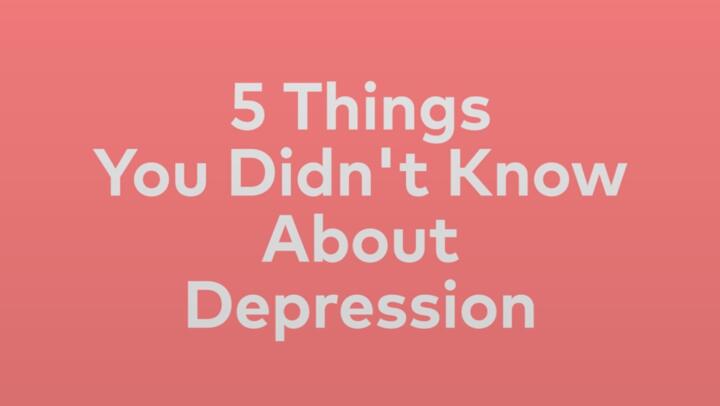The Office on Women’s Health estimates that about
This article will provide an overview of BPD, including common symptoms. It will also discuss how doctors diagnose BPD and available treatment options.
Symptoms of borderline personality disorder

People with BPD experience mood fluctuations and persistent uncertainty about their individual identity.
As a result, a person with BPD may suddenly and drastically change their opinions and values about people, relationships, or goals. They may feel deep love for a person one day, then rapidly shift to anger and distrust the next.
These symptoms and unpredictable mood shifts can lead to impulsive and, in some cases, dangerous actions. It can become difficult for someone with BPD to build and maintain strong relationships.
Common symptoms of borderline personality disorder
The
- a pattern of problems in relationships with friends, family members, and other close contacts
- fear of abandonment, including quickly building intimacy or cutting off relationships in anticipation of abandonment
- extreme mood shifts, particularly in feelings about people
- episodes of mood changes that last hours or even days
- persistent feelings of emptiness
- intense anger or difficulty controlling anger
- difficulty trusting other people
dissociation Trusted Source PubMed Central Highly respected database from the National Institutes of Health Go to source , or feeling separate from oneself- recurring thoughts or episodes of self-harm, such as cutting
- experiencing frequent suicidal thoughts or displaying suicidal behavior
- dangerous or risky behavior, including binge eating, substance misuse, or unprotected sex
NIMH notes that each case of BPD is different, and not everyone with BPD will experience the same symptoms.
Serious symptoms that might indicate a life threatening condition
In some cases, BPD can be life threatening. Seek immediate medical care (call 911) for life threatening symptoms, including:
- being a danger to oneself or others, including threatening, irrational, or suicidal behavior
- trauma, such as bone fracture, burns, lacerations, eye injuries, and other injuries
Suicide prevention
If you know someone at immediate risk of self-harm, suicide, or hurting another person:
- Ask the tough question: “Are you considering suicide?”
- Listen to the person without judgment.
- Call 911 or the local emergency number, or text TALK to 741741 to communicate with a trained crisis counselor.
- Stay with the person until professional help arrives.
- Try to remove any weapons, medications, or other potentially harmful objects.
If you or someone you know is having thoughts of suicide, a prevention hotline can help. The National Suicide Prevention Lifeline is available 24 hours per day at 800-273-8255. During a crisis, people who are hard of hearing can use their preferred relay service or dial 711 then 800-273-8255.
What causes borderline personality disorder?
Experts do not know the exact cause of borderline personality disorder. NAMI reports that researchers believe a combination of factors may play a role in BPD, including genetics, differences in brain structure and function, and environmental factors such as trauma.
The American Association for Marriage and Family Therapy (AAMFT) reports that an imbalance of serotonin may play a key role. Serotonin is a neurotransmitter that helps a person regulate their mood and manage their emotions.
AAMFT goes on to say that certain risk factors may also contribute to the development of BPD.
Risk factors for borderline personality disorder
A number of factors increase the risk of developing BPD. However, not all people with risk factors will get BPD.
The
- family history of BPD
- abandonment or neglect as a child or adolescent
- family separations or disruptions as a child or adolescent, including the death of a parent
- exposure to unstable or hostile relationships
- physical or sexual abuse as a child or adolescent
Statistics from AAMFT say that about 50–70% of people who have BPD report a history of sexual abuse during childhood.
If you are at increased risk for BPD, you may benefit from mental health screening or talk therapy. Discuss your risk factors with your primary care doctor or schedule an appointment with a licensed mental health professional.
Co-occurring conditions with borderline personality disorder
NAMI reports that many people with BPD have one or more additional conditions. This can complicate receiving an accurate diagnosis and finding effective treatment.
Conditions that commonly occur with BPD include:
- depression
- anxiety
- bipolar disorder
- substance use disorder
- attention deficit hyperactivity disorder
- post-traumatic stress disorder
- eating disorders, particularly bulimia nervosa
Your doctor or mental health professional will develop a treatment plan to address all of your conditions and find effective options to manage symptoms.
How doctors diagnose borderline personality disorder
There are no blood, laboratory, or imaging tests that can accurately detect or diagnose BPD. Your doctor and mental health professional will use a series of examinations to evaluate your symptoms.
Your care team will likely perform a physical exam and discuss your family history. They may also perform a psychological evaluation and ask you about your symptoms.
Questions your doctor might ask may include:
- Do you experience mood fluctuations?
- How have your moods affected your relationships and employment?
- Have you ever considered or attempted self-harm or suicide?
- How have anger or fear affected your personal relationships?
- Do you currently or have you ever used substances to cope with your emotions?
- Do you have a family history of abuse, mental illness, or substance use?
DSM-5 diagnostic criteria for borderline personality disorder
The Diagnostic and Statistical Manual of Mental Health Disorders, Fifth Edition (DSM-5) lists several indicators of BPD. A doctor or mental health specialist will diagnose BPD in someone who exhibits five or more of the following symptoms:
- frantic efforts to avoid abandonment, either real or imagined
- a pattern of intense and unstable relationships, marked by alternating extremes of idealization and devaluation
- a markedly and persistently unstable sense of self
- impulsive behavior in at least two self-damaging areas, including substance misuse, unprotected sex, and reckless driving
- recurring thoughts of suicide, suicidal behavior, or self-mutilation
- extended periods of intense moods that last hours up to a few days
- chronic feelings of emptiness
- intense or inappropriate anger that is difficult to control
- paranoia or dissociation from reality
Although it may be difficult to talk about your experiences, providing honest, accurate information can help your doctor reach an accurate diagnosis and begin treatment.
Treatments for borderline personality disorder
There is no cure for BPD, and the condition can be difficult to treat. However, effective treatments and therapies are available.
NAMI explains that the goal of BPD treatment is to help the person become more in control of their symptoms and self-manage their care as they learn what works best for them.
Psychotherapy forms the foundation of treatment for BPD. Medications may be used to treat mood instability, depression, or disordered thinking.
Although treatment for BPD can take time, many people improve with therapy.
A type of psychotherapy
Doctors may recommend hospitalization as part of treatment if someone expresses suicidal thinking or takes suicidal action. A person also may require hospitalization if they experience substance misuse, psychosis, or significant stress.
Common types of psychotherapy for borderline personality disorder
Doctors may recommend several types of psychotherapy to treat BPD, including:
- cognitive behavioral therapy to work on thought patterns and behavior
- DBT to work on acceptance, problem-solving, skill development, thought patterns, and behavior
- family therapy to help develop familial support and understanding
- group therapy to speak with others who have BPD and other mental health conditions
- individual therapy to work on personal mental health goals
- psychodynamic therapy to discover and understand past issues and their relationships to current behaviors and actions
Medications for borderline personality disorder
If there are coexisting psychiatric conditions or symptoms, such as depressed mood, unstable mood, or psychosis, doctors may prescribe medications for BPD in addition to psychotherapy. Common medications for BPD include:
- antidepressants to treat depression or depressed mood
- antipsychotics to treat psychoses or disordered thinking
- mood stabilizers to treat bipolar disorder or unstable moods
What you can do to improve your borderline personality disorder
In addition to engaging in psychotherapy and taking medications if your doctor recommends them, you may be able to improve the likelihood of success of your treatment by:
- avoiding alcohol or illicit drugs
- avoiding making decisions based on emotions
- getting enough sleep
- getting regular exercise
- seeking help immediately if you want to hurt yourself or others
Potential complications of borderline personality disorder
Complications of untreated or poorly controlled BPD can be serious and even life threatening in some cases.
You can minimize your risk of serious complications by following the treatment plan your healthcare professional designs specifically for you. Complications of BPD include:
- abuse of drugs or alcohol
- depression
- difficulties maintaining relationships
- eating disorders
- legal or financial problems
- problems at work
- self-harm
- social isolation
- strained familial relationships
- suicide
Summary
BPD is a mental health condition in which a person experiences chronic and recurrent mood instability. A person with BPD may have rapidly changing feelings, thoughts, and values that lead to impulsive actions.
Someone with BPD may alternate between extremes of intense closeness and sudden distrust. This mood instability makes it difficult to build and maintain close relationships. It can also lead to impulsive and dangerous behavior such as substance misuse and reckless driving.
There is no specific cause of BPD, but researchers have identified factors that increase the risk of developing it. These include a family history of BPD, exposure to physical or sexual abuse in childhood, and separation or neglect from a parent at a young age.
Treatment is available for BPD and focuses on helping someone become independent in managing their symptoms. With successful treatment, someone with BPD can stabilize their mood, reduce their risk of complications, and build healthy relationships.


















